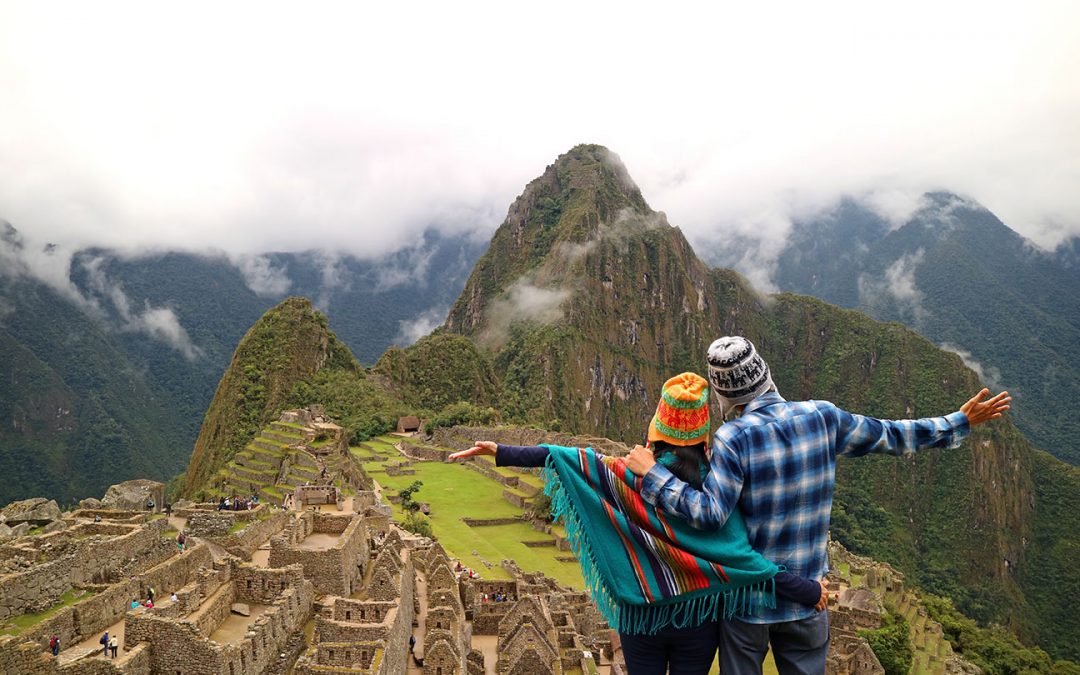Machu Picchu:
In 1911, the Inca citadel was rediscovered – since then it has made it to one of the Seven New Wonders of the World. Everyone has the image of the ruined city in mind, but it’s a whole different experience to explore every corner of it on site. It is the history of this place that captivates travelers, the mystique of this extinct culture. But not only that, the place itself, the location right on a lonely mountain in the Urubamba Valley, is breathtaking. This landscape in the middle of the Peruvian jungle will not let you go. Also, those who like hiking will get their money’s worth here. Besides the world famous Inca Trail, there are many other hiking routes that will take you to Machu Picchu within a few days, passing small villages and crossing the beautiful nature with all the amazing flora and fauna.
Arequipa / Colca Canyon:
Less known than Cusco, for example, but at least as worth seeing, is the “white city” of Arequipa. Many of the bright white colonial houses were built of volcanic stone and offer a beautiful sight with the cathedral on the main square. Three volcanoes tower over the city, completing the magnificent panorama. From Arequipa, the famous Colca Canyon, the second deepest canyon in the world, is very easy to reach. Besides the great landscape, this place is famous for one thing: Condors – the national animal of Peru and probably one of the most spectacular encounters with nature that our earth has in store. With their huge wings, they soar over the heads of travelers, always with the backdrop of the canyon and volcanoes in the background.
Huacachina:
Another world reveals itself as soon as one enters Huacachina. An oasis in the middle of the desert before Ica. Around the water, behind the now numerous hotels and hostels, large sand dunes stretch as far as the eye can see. If the relaxing atmosphere in the oasis is not enough for you, you can rent a sandboard on site and ride it down the dunes – it’s like snowboarding, only in the desert. Alternatively, many tours are offered that take you to more remote, even larger sand dunes, from where you can go headfirst on your board and plunge on down. The way there, is contested in suitable dune buggies, where the ride itself guarantees an adrenaline rush.
Vinicunca / Rainbow Mountain:
Recently, hardly any travelers knew this wonderful place, remote, at an altitude of over 5000m, probably the most colorful mountain landscape in the world. But in the meantime, this insider tip must not be missing on any bucket list during a trip to Peru. From Cusco, it is a day hike that can be done on foot or on horseback after getting there. One should not underestimate the effort of a hike at this altitude, so it is advisable to acclimatize a few days in the altitude of Cusco before setting off for the tour. But all the hardships to finally stand on the Vinicunca, with the entire panorama of the colorful rainbow mountains, are more than worth it. The sight is indescribable, and no photo can truly make the experience tangible – it’s one of those places you have to see with your own eyes.
Nationalpark Manú:
Parque Nacionál de Manú is a true paradise of biodiversity. Quite a few people claim it to be the most biodiverse spot on our planet – from jaguars and sloths, to parrots, river dolphins and alligators, to spectacled bears, giant otters and meter-long anacondas – the diversity of the Peruvian rainforest is truly amazing. Especially for eco-tourists, it’s the perfect place for a getaway. While the national park itself covers an area roughly equivalent to half of Switzerland, only limited portions of it are open to tourists, allowing for the best possible protection of nature and all its beauty. Logging and agriculture or other commercial use is prohibited within the boundaries of Manu National Park, and multi-day tours are subject to strict regulations; all in the spirit of the ecosystem worth protecting.

